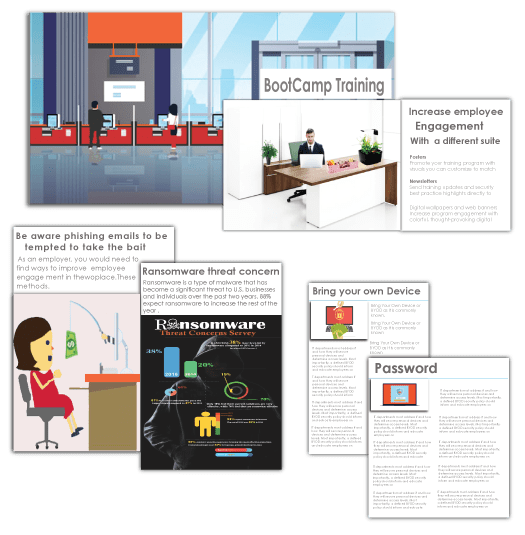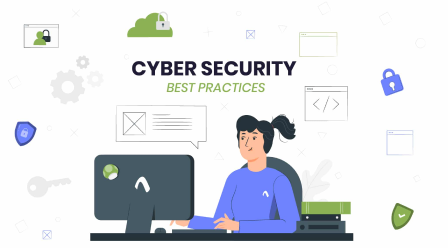Certified Network Defender (CND) is a hands-on, instructor-led comprehensive network security certification training program that is vendor-neutral.The National Initiative of Cybersecurity Education (NICE has developed a skills-based, lab-intensive program based on a job-task analysis and cybersecurity education framework .The course has also been matched to worldwide job roles and responsibilities, as well as job roles for system/network administrators in the Department of Defense (DoD).The course is designed and developed after extensive market research and surveys.
-
About this course
The target of this self-study Certified Network Defender (CND) certification program is to teach Network Administrators in guarding, detecting, and responding to network attacks. Network administrators are typically able to deal with network components, traffic, performance, and usage, network topology, system location, and security policies, among other things.
-
Why should you take this course?
With the Certified Network Defender course, you can future-proof your career and meet the growing demand for cyber security specialists by getting certified to protect, detect, and respond to data attacks.As a CND, you'll gain a fundamental understanding of the true construct of data transfer, network technologies, and software technologies, allowing you to understand how networks work, what software automates, and how to analyze subject material.
In addition, the fundamentals of network defense, the application of network security controls, protocols, perimeter appliances, secure IDS, VPN, and firewall configuration, and the intricacies of network traffic signature, analysis, and vulnerability scanning are covered, all of which will assist the Network Administrator in designing more effective network security policies and incident response plans.
-
What will you learn by taking this course?
✅ A dedicated focus on IoT security
✅ Network virtualization practices for the remote workforce
✅ Enhanced Cloud Security & IoT and Operational Technology (OT) Modules
✅ Introduction to threat intelligence
✅ In-depth Attack Surface Analysis
-
Chapter 1: Computer Network and Defense Fundamentals
✅ Network Fundamentals
✅ TCP/IP Networking Basics
✅ IP Addressing
✅ CND Triad
✅ CND Actions
✅ Network Components
✅ TCP/IP Protocol Stack
✅ Computer Network Defense (CND)
✅ CND Process
✅ CND Approaches
-
Chapter 2: Network Security Threats, Vulnerabilities, and Attacks
✅ Essential Terminologies
✅ Network Security Concerns
✅ Network Security Vulnerabilities
✅ Network Reconnaissance Attacks
✅ Network Access Attacks
✅ Denial of Service (DoS) Attacks
✅ Distributed Denial-of-Service Attack (DDoS)
✅ Malware Attacks
-
Chapter 3: Network Security Controls, Protocols, and Devices
✅ Fundamental Elements of Network Security
✅ Network Security Controls
✅ User Identification, Authentication, Authorization and Accounting
✅ Types of Authorization Systems
✅ Authorization Principles
✅ Cryptography
✅ Security Policy
✅ Network Security Devices
✅ Network Security Protocol
-
Chapter 4: Network Security Policy Design and Implementation
✅ What is Security Policy?
✅ Internet Access Policies
✅ Acceptable-Use Policy
✅ User-Account Policy
✅ Remote-Access Policy
✅ Information-Protection Policy
✅ Firewall-Management Policy
✅ Special-Access Policy
✅ Business-Partner Policy
✅ Email Security Policy
✅ Passwords Policy
✅ Network-Connection Policy
✅ Physical Security Policy
✅ Information System Security Policy
✅ Bring Your Own Devices (BYOD) Policy
✅ Software/Application Security Policy
✅ Data Backup Policy
✅ Server Policy
✅ Wireless Network Policy
✅ Incidence Response Plan (IRP)
✅ User Access Control Policy
✅ Switch Security Policy
-
Chapter 5: Physical Security
✅ Physical Security
✅ Access Control Authentication Techniques
✅ Physical Security Controls
✅ Other Physical Security Measures
✅ Workplace Security
✅ Personnel Security: Managing Staff Hiring and Leaving Process
✅ Laptop Security Tool: EXO5
✅ Environmental Controls
✅ Physical Security: Awareness /Training
✅ Physical Security Checklists
-
Chapter 6: Host Security
✅ Host Security
✅ OS Security
✅ Windows Security
✅ Linux Security
✅ Securing Network Servers
✅ Hardening Routers and Switches
✅ Application/software Security
✅ Data Secur
✅ Virtualization Security
✅ Virtualization Vendors
✅ Virtualization Security
✅ Securing Hypervisor
✅ Securing Virtual machines
✅ Secure Virtual Network Management
-
Chapter 7: Secure Firewall Configuration and Management
✅ Firewalls and Concerns
✅ Firewall Rules
✅ Firewall Technologies
✅ Firewall Topologies
✅ Firewall Rule Set & Policies
✅ Firewall Implementation
✅ Firewall Administration
✅ Firewall Logging and Auditing
✅ Firewall Security Auditing Tools
-
Chapter 8: Secure IDS Configuration and Management
✅ Intrusions and IDPS
✅ IDS
✅ Types of IDS Implementation
✅ IDS Deployment Strategies
✅ Types of IDS Alerts
✅ IPS
✅ IDPS Product Selection Considerations
✅ IDS Counterparts
-
Chapter 9: Secure VPN Configuration and Management
✅ Understanding Virtual Private Network (VPN)
✅ VPN Concentrators
✅ Selecting Appropriate VPN
✅ VPN Technologies
✅ VPN Topologies
✅ Common VPN Flaws
✅ VPN Security
✅ Quality Of Service and Performance in VPNs
-
Chapter 10: Wireless Network Defense
✅ Wireless Terminologies
✅ Wireless Networks
✅ Wireless Standard
✅ Wireless Topologies
✅ Typical Use of Wireless Networks
✅ Components of Wireless Network
✅ Bluetooth Threats
✅ Wireless Network Security
-
Chapter 11: Network Traffic Monitoring and Analysis
✅ Router Based Monitoring Techniques
✅ Non-Router Based Monitoring Techniques
✅ Network Monitoring: Positioning your Machine at Appropriate Location
✅ Network Traffic Signatures
✅ Packet Sniffer: Wireshark
✅ Detecting OS Fingerprinting Attempts
✅ Detecting PING Sweep Attempt
✅ Network Monitoring and Analysis
✅ Bandwidth Monitoring
-
Chapter 12: Network Risk and Vulnerability Management
✅ Risk Levels
✅ Risk Matrix
✅ Key Risk Indicators(KRI)
✅ Risk Management Phase
✅ Enterprise Network Risk Management
✅ Vulnerability Management
-
Chapter 13: Data Backup and Recovery
✅ Introduction to Data Backup
✅ RAID (Redundant Array Of Independent Disks) Technology
✅ Storage Area Network (SAN)
✅ Network Attached Storage (NAS)
✅ Selecting Appropriate Backup Method
✅ Choosing the Right Location for Backup
✅ Backup Types
-
Chapter 14: Network Incident Response and Management
✅ Incident Handling and Response
✅ Incident Response Team Members: Roles and Responsibilities
✅ First Responder
✅ Incident Handling and Response Process
✅ Forensic Investigation
✅ Eradication and Recovery
✅ Post-incident Activities
✅ Training and Awareness
-
Who all can give CND Examination ?
✅Network Administrators
✅Network Security Administrators and Engineer
✅Security Analyst
✅Network Defense Technicians
✅CND Analyst
✅Security Operator
✅Anyone who involves in network operations
-
What are the eligibility criteria for self-study students?
It is mandatory for you to record two years of information security-related work experience and
get the same endorsed by your employer. -
When will I get my certificate once I pass the certification examination?
Upon successfully passing the exam you will receive your digital ANSI accredited CND certificate
within 7 working days. -
Can I review my answers?
You can mark your questions and review your answers before you end the test.
-
Should I attend training to attempt the exam?
EC-Council recommends, but not mandatory, that CND aspirants attend formal classroom training to reap the maximum benefit of the course and have a greater chance of clearing the examinations.
-
How many questions are there in the CND exam and what is the time duration?
The CND examination consists of 100 questions. The exam is of 4-hour duration.
- Key Features:
- Created by a Security expert :
- Access period : 12 months
- Course duration : 40+ hours
- Quizzes & revision exams :
- Certificate of completion :
- Support : 24/7 hours

CERTIFIED NETWORK DEFENDER
Pick your preferred schedule
Why learn with us?
- We're tech career experts
- 25,000+ students worldwide
- Alternative to traditional university education
- Start a new career or advance your current one & land your dream job
- Award winning StudentCare
- Most in-demand skills for job market
- Partnered with most biggest accreditors in the world
- Exclusive student benefits

Reason to Choose CERTIFIED NETWORK DEFENDER

- Exam Pass Guarantee (live online)
- 100% Satisfaction Guarantee
- Immediate access to Aspire portal for practice exam
- Get started with Certification pathway
- Knowledge Transfer Guarantee
- Take advantage of globally recognized platform
Career ready education
Experience hands-on labs based on major network security tools, giving you real world expertize on all current network security technologies and operations

Find Your Boot Camp
Boost Engagement with delivering Communication Tools

Increase employee engagement with a different suite of communication tools like:
Posters
Promote your training program with visuals you can customize to brand... more
Newsletters
Send training updates and security best practice highlights directly... more
Digital wallpapers and web banners
Increase program engagement with colorful thought-provoking messaging... more
Training Videos/Animations
Strengthen key awareness concepts and skills through stylish visual... more
Why Aspire Tech
Award-winning courses
Aspire's award-winning online courses and programs are created and delivered by a renowned Cyber Security specialist.
The perfect fit for business
Plans for small to large businesses that are flexible to match your budget. There is a volume discount available.
Cost effective training
For a fraction of the expense of traditional classroom training, train thousands of employees in numerous locations.
